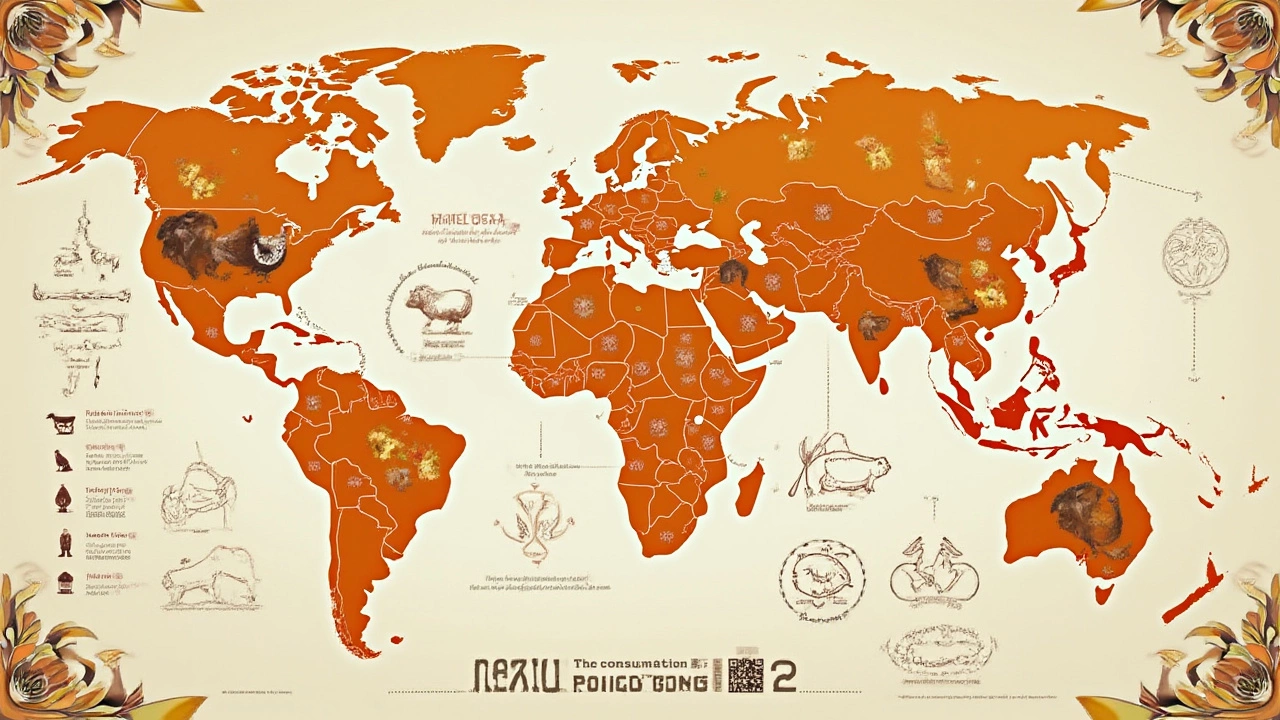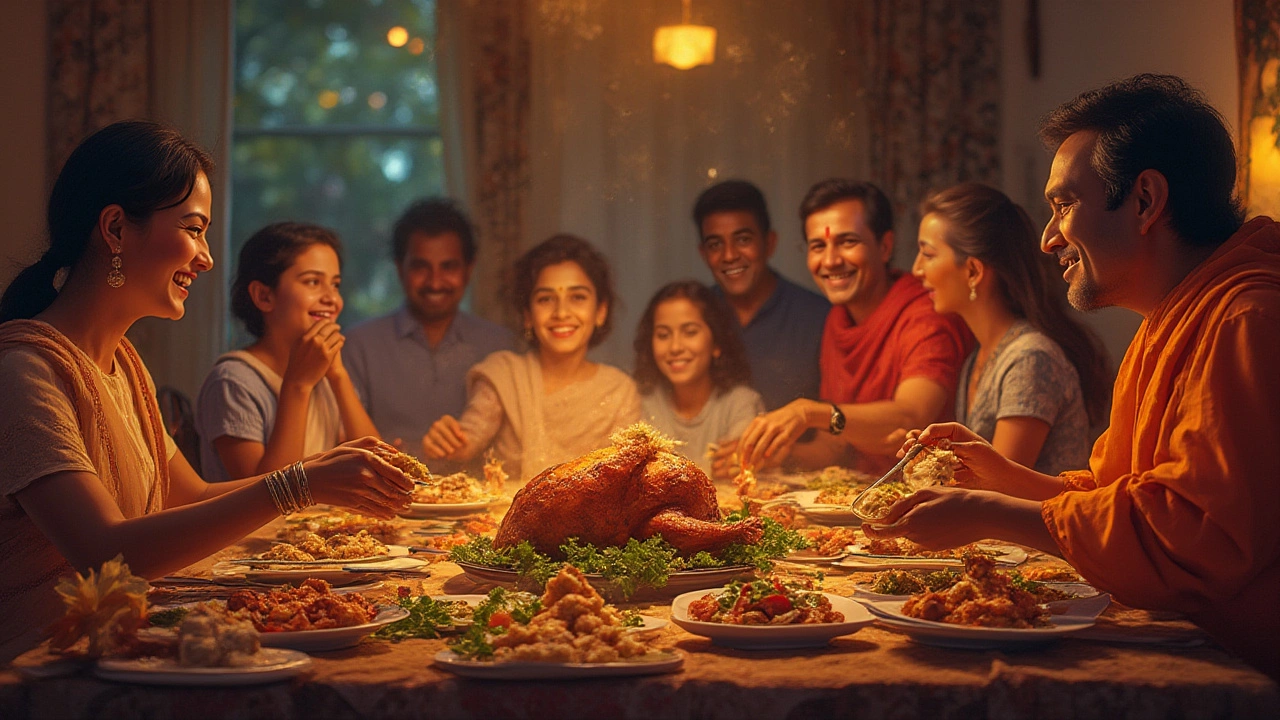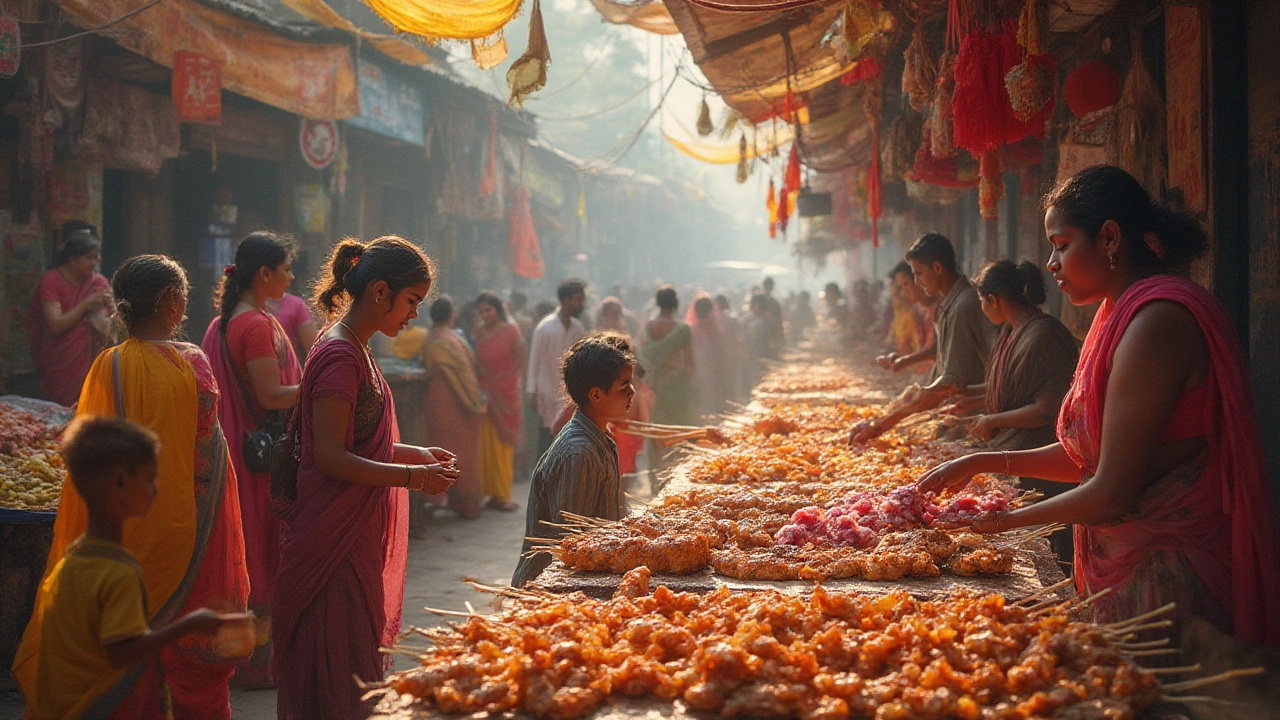Chicken isn’t just what winds up in your sandwich or weekend curry—it's actually the world’s most popular meat, outstripping beef, pork, and even fish in kitchens across continents. The numbers say it all: people eat more chicken than any other meat on Earth. So why does chicken have such an iron grip on dinner tables from Brazil to Beijing? Let’s dig into how this humble bird became the reigning champ, why cultures everywhere can’t seem to get enough, and some mind-blowing figures you’ll want in your back pocket for the next trivia night.
Chicken Rules the Global Plate
Start with a quick scroll through food delivery apps in Tokyo, a food market in Lagos, or even my cat Jasper’s feverish gaze whenever I open a rotisserie chicken—everywhere you look, chicken is leading the charge. As of 2024, humans are eating more than 135 million tons of chicken per year. It easily outpaces pork (117 million tons), beef (73 million tons), and all types of seafood combined (roughly 178 million tons—but that includes every sea creature, not just one species).
There’s a reason for these record-breaking numbers. Chickens grow fast, take up less space compared to cows or pigs, and need less feed to put on muscle. Farms can raise them efficiently—even small family plots keep a handful to keep eggs and meat flowing. And because chickens aren’t sacred or taboo in nearly any culture (with rare exceptions), they’ve wriggled into the heart of global eating from Nashville to New Delhi.
Take a look at this side-by-side:
| Meat Type | Global Consumption 2024 (Million Tons) | Top Eating Countries |
|---|---|---|
| Chicken | 135 | USA, China, Brazil |
| Pork | 117 | China, EU, USA |
| Beef | 73 | USA, Brazil, China |
| Seafood (all types) | 178 | China, Indonesia, India |
The U.S. feasts on nearly 45 kilograms of chicken per person each year. Even countries traditionally obsessed with pork, like China, are seeing chicken rise thanks to affordability and health perception. Brazil, oddly enough, is both a top consumer and exporter. No matter the region’s climate or religion, chicken sneaks into street foods, supermarket freezer aisles, and festival fare.
The secret weapon? Versatility. Chicken is the blank canvas of the protein world—fry it, grill it, stew it, toss it into a taco, or dunk it in spicy gravy. Every cuisine bends it to local tastes, spices, and traditions. You’ll spot chicken biryani at an Indian wedding, yakitori skewers in a Tokyo izakaya, or Sunday roast chicken in every British home. The world eats chicken for breakfast (think congee in China), lunch (shawarma wraps from Lebanon), and dinner everywhere else. Its neutrality helps it cross borders no problem. Plus, it generally costs less than beef or lamb, which matters big-time in budget-conscious households.
And then there’s health. Compared to the marbled fat in beef or the richer taste of pork belly, chicken (especially breast meat) is naturally leaner. Fitness types, doctors, and recipe bloggers harp on chicken’s protein and lower-fat perks. It’s considered the go-to for healthy eating in nearly every language. That reputation only fuels the demand.

Chicken’s Surprising Cultural Footprint
Weird truth: chicken’s popularity didn’t start with the Colonel or drive-through cravings. Archaeologists have found evidence of chicken domestication going back about 10,000 years in Southeast Asia and China. Early humans liked that these birds were easy to corral, didn’t eat as much as goats or pigs, and made fewer demands on their keepers—kind of like choosing a cat over a dog if you’re low on patience. For centuries, chickens were more often raised for eggs than for meat, but things flipped as populations exploded.
Chicken isn’t just food—it’s culture and celebration. Think about a few unexpected ways chicken has shaped and been shaped by global traditions:
- Japan: Fried chicken is standard Christmas fare. KFC even does special holiday buckets thanks to a quirky marketing campaign from way back in the ‘70s!
- West Africa: Jollof rice served with grilled or stewed chicken is the poster dish at family parties and street festivals.
- Mexico: Pollo asado—marinated grilled chicken—is weekend must-eat, with families gathering around the grill almost every Sunday.
- France: Coq au vin, that rich red-wine-braised chicken stew, is a culinary tradition that goes centuries back.
- India: Chicken tikka masala practically counts as a national symbol, despite its debated British-Indian roots.
- Philippines: Adobo, often made with chicken, is home-cooking comfort and the country’s unofficial dish.
Even religious rules favor chicken sometimes. For example, during Ramadan, chicken usually headlines the big iftar meals. Jews traditionally eat chicken instead of red meat during festivals due to kosher rules. Meanwhile, while Hindus avoid beef and Muslims steer clear of pork, chicken rarely ends up banned, making it the perfect “middle meat” almost everywhere.
Chicken’s shape-shifting abilities go beyond grill marks or gravy. In pop culture, it stars in everything from novels to sitcoms—who can forget Monica’s roast chicken in Friends, or Chicken Little’s brave attempts to save the day? Social media is full of viral fried chicken hacks. And food chains are in a never-ending battle for best spicy chicken sandwich supremacy, with Chick-fil-A, Popeyes, and countless Korean fried chicken spots slugging it out worldwide.
No wonder chicken is almost a celebrity. The global chicken export business booms—Brazil, the U.S., and Thailand ship frozen and fresh chicken to every corner, even places where raising chickens isn’t practical. If you’re eating chicken nuggets in Sweden, there’s a fair chance the bird vacationed from South America. Even Jasper, my tabby, gets chicken treats since cat food brands know how irresistible it is—even for picky felines.

Buying, Cooking, and Tasting: A Global Love Affair
No matter the country or income level, chicken shows up on the shopping list for millions daily. Want to make the most of the world’s favorite meat in your own kitchen or food adventures? I’ve got some real-world tips and facts you can use.
When choosing chicken, look for clear labeling about origin and farming. Free-range and organic chickens tend to have a better texture and flavor, though they can cost a bit more—worth it if you’re making something special like roast chicken or a good broth. In street markets abroad, you might see fresh chickens cleaned right in front of you. Some places—like France or Japan—take chicken breed and diet seriously, labeling it as “Label Rouge” or “Jidori” so you know you’re getting a premium bird.
- Talking food safety: chicken is versatile, but it’s also notorious for harboring bacteria like Salmonella or Campylobacter. Always cook to an internal temp of at least 75°C (165°F)—yes, break out a kitchen thermometer. And always wash your hands and surfaces after touching raw poultry. Don’t risk it!
- Storing leftovers? Cooked chicken lasts 3-4 days in the fridge, or up to 3 months in the freezer. Just keep it sealed and wrapped so it doesn’t dry out or soak up fridge smells.
- Marinade magic: chicken soaks up flavor like a sponge. Citrus, yogurt, soy sauce, spices—you name it, chicken will work with it. Quick tip: go for at least 30 minutes marinating, but up to 12 hours if you really want punchy flavor.
- For budget meals, chicken thighs or drumsticks are cheap, juicy, and way more forgiving than lean breast meat (which can dry out if you’re not careful). Dark meat is packed with flavor; it’s why street vendors worldwide often favor these cuts over pricier breasts.
- If you travel, don’t skip local chicken dishes. My theory? You can learn a lot about a place through its chicken—Japanese karaage, Portuguese Piri Piri, Singaporean Hainanese chicken rice. Tourists ignore these classics at their peril. Even the simple versions are usually packed with history and flavor.
Ever wondered why chicken tastes so different depending on where you eat it? Two reasons: breed and feed. Local varieties (like France’s Bresse or India’s Kadaknath) pack unique flavors, much like how cheese or wine develops terroir. And what chickens eat—corn, insects, grains—influences the final taste. If you try chicken abroad and find it more flavorful or different in texture, it’s probably a mix of both, not just the chef’s skills.
Finally, for fans of facts and not just food: while modern chicken farming has made big strides in efficiency (raising a broiler chicken now takes less than half the feed and time than 1970), there are growing pushes for better animal welfare. “Pasture-raised” and “air-chilled” options are popping up in stores, promising tastier, ethically raised birds. If you’re lucky enough to have backyard chickens, you get the best of all worlds—eggs, meat, and comic relief.
So there’s the answer most folks never see coming: chicken is the number 1 meat in the world, and not by a little. Next time you sit down for a meal—or just open a bag of treats for your cat—remember, you’re biting into a global tradition shared by billions. Chicken connects people, cultures, generations. It’s the protein that never goes out of style—one well-roasted drumstick at a time.
